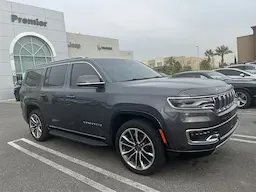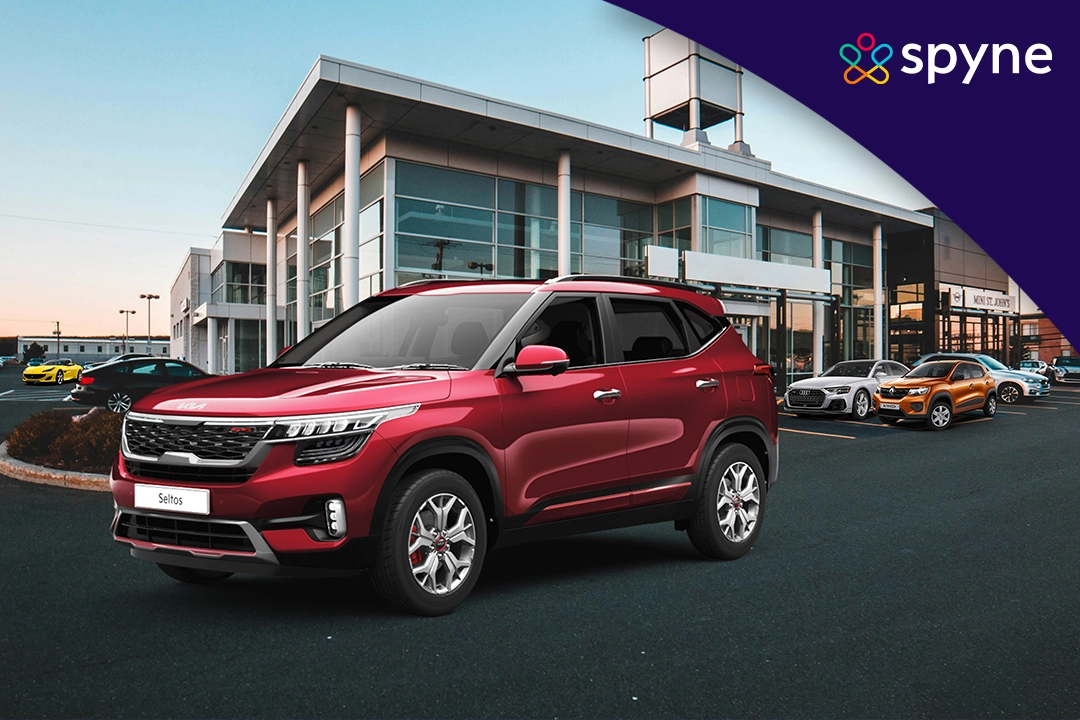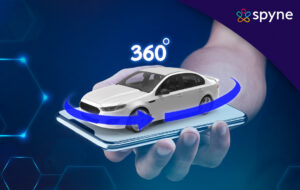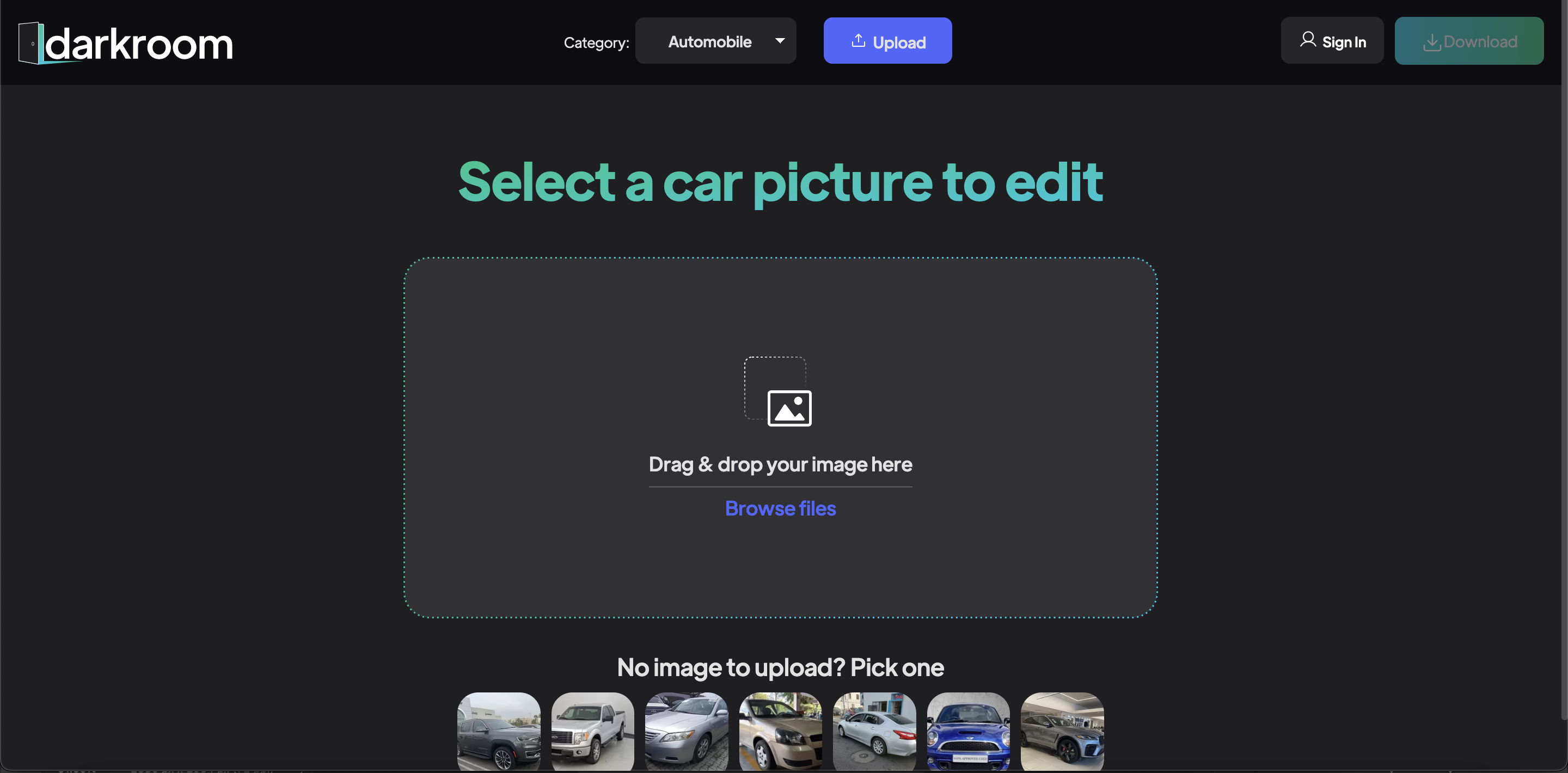Auto dealerships have always been an integral part of the automotive industry. They offer a range of services, including selling new and used cars, car financing, maintenance and repair services, etc. In recent years, the automotive dealership industry has seen significant growth due to technological advancements and consumer behavior changes. Carmalls today are faced with a unique set of challenges and opportunities. As technology evolves, auto dealerships must adapt to stay relevant and competitive. Therefore, this includes implementing new tools and systems to streamline operations, improve customer experiences, and drive revenue growth. In this blog, we will explore the world of auto dealerships. We will examine how they operate, how to start a car dealership, and what offerings can attract customers. Let’s begin.
What is an Automotive Dealership?
A car dealership is a retail business that sells or leases used or new cars. Car Dealerships act as a middleman between vehicle manufacturers and car buyers. Car dealerships also earn revenue by selling vehicle spare parts and providing automotive maintenance services. They operate under a dealership agreement with a sales subsidiary or a specific automaker which allows them to sell new or used vehicles. Car dealerships play an important source of local and state taxes.
How do Car Dealerships Work?
Specific companies often franchise an auto dealership to sell and service their vehicles. Therefore, they have physical showrooms that house the used and new vehicles to be sold, areas for offering mechanical services, and repair facilities. Whereas, the State Law prohibits US car dealerships from buying from the manufacturer directly. Here we discuss the working of various departments of a car dealership.

1. Vehicle Inventory
Used cars are bought through trade-ins or direct purchases. Dealerships use floor plan financing to buy inventory and pay interest on the amount for the period that a car stays in their lot. This means the quicker the car sells, the better. Discounts are used to sell cars that are sitting on the lot for a long period because the primary concern then shifts from making a profit to getting rid of the old inventory.
2. Pricing and Incentives
Some prices can be negotiated, while on other vehicles, the dealership is required to follow strict pricing guidelines. An automotive dealership can get ‘hold-back’ money from the manufacturer, along with other incentives and rebates on new cars. In the case of used cars, the selling price is decided based on what is paid to buy the vehicle and recondition it.
3. Management and Sales
The owner acts as a dealer principal if he owns a single dealership, and appoints managers if he owns more than one dealership. The manager looks after the day-to-day operations depending on their agreement with the principal. The manager often needs to buy in as a minority partner and is given bonuses for achieving targets or unusually high profits.
4. Finance and Insurance
F&I, or the car dealer finance and insurance department, takes care of the financing for customers. Therefore, this department makes money by selling the car for a loan using the dealership reserve, earning a profit from the interest charged. Selling of insurance and warranties and the paperwork associated with a vehicle purchase are all taken care of by the F&I department. This department is often called the front end of a dealership.
5. Parts, Service, and Body Shop
Where F&I is the front end, the service, parts, and body shop department are the back end of a car dealership. They take care of servicing the vehicle after it has been sold to a customer. They help increase customer interactions and dealership revenue, but not all dealerships have these departments. Nowadays, car dealership DMS software is available for this function.
15 Best Tricks to Make a Car Dealership Great
Choosing the best and cheap car dealers is crucial for most consumers, whether they are planning to purchase their first vehicle, add-on vehicle, or could be an upgradation from their current vehicle. Choosing the best car dealership could be tricky for some consumers. However, there are various methods by which they can shortlist the best car dealer ship for themselves. Therefore, car dealers can follow some pathways to enlist in one of the top car dealers in town to be the first choice for their consumers. Here are some ways that you can follow to make an auto dealership and provide a pleasant experience.
1) Responsive Support
Car buyers have a lot of questions to ask before making an actual purchase. Car dealers can focus on providing excellent support to their visitors. Consumers might ask their queries online or by a physical walk-in. Dealers should be welcoming and should quickly address customer queries and concerns. They can install automotive chatbots, and offer proactive support such as follow-up calls.
2) Know your buyers
Dealers should be aware of the trend, offering different models won’t help you to make a sale. A car loaded with features but still not being sold is a liability. Dealers should be aware of the recent trending models and should be prepared to stock their inventory.
3) Attractive Visual Display
Car buyers will check out the most number of cars before making their purchasing decision. Dealers should present all the vehicle and their models available physically and should also provide a clean and appealing high-quality visual display which is an easy-to-navigate car dealer website for the best auto deals.
4) Professional Staff
Your staff should be knowledgeable and interactive. Therefore, consumers will ask several questions and your staff should provide them with a personalized experience. Your staff should be aware of all the features and specifications of all the car models your dealership is offering. Every employee in a team should exhibit professionalism and excellent customer service skills.
5) Happy customers
Car dealers should build their reputation and sustain them to stand out from this competitive market. Therefore, make sure to provide excellent services to your customers after they complete their purchase. Should always ask them for the review which you can utilize on your online platforms. A nonsatisfied customer might not show their sorrow. However, will give a bad review which will affect your brand’s reputation.

6) Enhance your marketing strategy
On average a car buyer upgrades their vehicle after 7 years of use. Therefore, you can not sell your services or products to the same customer every year. To generate revenue every single day, you would be requiring new customers. Therefore, understand your target audience and spend your money on advertisement wisely with an appealing and attractive marketing strategy.
7) Transparent and Fair Business Practices
Automotive dealership should create a relationship with their clients and should provide a smooth and justified deal. Whereas, be clear about pricing and car dealership finance, and make sure that the customers are getting a fair deal. Providing a fair deal will foster a strong market reputation.
8) Extraordinary customer experience
Understand the needs and requirements of the customers. Provide them with an exceptional service experience by fulfilling their all requests. Dealers should value their consumer’s time and should be approachable and available easily for any queries of the clients for example, providing them a test drive, giving them a walkaround of a car, or explaining features and financing options in detail.
9) Variety of products
To achieve customer satisfaction level, dealers should display all the available cars and their upgraded models. Therefore, customers wish to customize their desirable vehicle as per their preference based on color, accessories, rims, wheels, etc. Make sure you explain all the availabilities and customization options you can provide.
10) Accessibility and Convenience
Consumer satisfaction should be the top priority for car dealers. Consumers might have different preferences in their car buying journey, It could be online or offline. Therefore, ensure the dealership is easy to reach, offers flexible hours, and provides a user-friendly online platform for various services. Dealers should provide the same kind of quality support to each consumer. To win the trust and make the journey of car purchasing more convenient for consumers. Dealers can cruise a goodwill gesture approach, for example, offering some welcoming gifts, providing a pick-and-drop shuttle, a kid’s lounge, etc.
11) Dealership Website
Dealers should be available everywhere for their customers. To build their online presence create an attractive and flawless website. Website will build trust in buyers and will also increase your brand image.
12) Follow-Up
Whenever a buyer approaches or tries to reach out for any queries. Therefore, make sure to ask for a follow-up. If a buyer does not respond do not assume the deal is off, a buyer might be confused or looking for a better deal. Always try to reach them until the buyer cuts off the deal.
13) Online presence management
Buyers are attracted towards enagainng social media posts. Therefore, build your attractive social media accounts to generate excitement and increase the new reach and heights of your business.
14) Host fun events
To attract new buyers and maintain good relationships with existing buyers, host some fun events. You can offer free test drives of the new vehicles or can also organize an event and display your collection to attract more buyers.
15) Leverage SEO
Car buyers do a lot of research before making a purchase. Use trending keywords and engaging content to stand out from your competitors. Leveraging SEO will bring you a lot of clients and will help your business to grow.
Types of Automotive Dealerships
There are different types of car dealerships each with their focus. Whether you are looking for a new car or a pre-owned vehicle understanding the different classifications will empower you to make an informative and strong decision. Here we have listed some of the common types of car dealerships:
| New Auto Dealerships | These dealerships offer brand-new vehicles straight from the manufacturer. Usually, they are franchised, which means they have an agreement with a particular automaker to sell their cars. Whereas, a manufacturer’s many brands may be sold by certain dealerships. |
| Used Auto Dealerships | Second hand car dealers sell previously owned vehicles. They can be independent or affiliated with a new automotive dealership. Some used auto dealerships specialize in certain types of vehicles, such as luxury cars, trucks, or SUVs. |
| Certified Pre-Owned Dealerships | These dealerships offer pre-owned vehicles that have undergone inspection and certification by the manufacturer based on a set of requirements. |
| Electric Vehicle Dealerships | As the EV market grows, dealerships dedicated to selling electric vehicles are becoming more common. These dealerships may also offer charging stations and other services for EV owners. |
Top 20 Trends in the Automotive Dealership Industry
The car dealership industry is witnessing several evolving trends, shaped by technological advancements, changes in consumer preferences, and broader economic factors. Here are key trends impacting this sector:
1) Connected Cars and Digital Technology: Dealerships are showcasing cars with advanced digital features, appealing to tech-savvy consumers.
2) Autonomous Vehicle Development: There’s an increasing introduction of semi-autonomous features in cars, as the industry works towards fully autonomous vehicles. Therefore, these vehicles can run with no human input.
3) Shared Transport: The rise in shared transportation services is leading dealerships to explore shared ownership models and partnerships with ride-sharing companies.
4) Automaker and Tech Company Collaborations: Automakers are partnering with tech companies to integrate cutting-edge technology into vehicles.
5) Electric Vehicle Growth: Increase in production of digital vehicles and dealerships are expanding their electric vehicle offerings in response to increased consumer demand and sustainability initiatives.
6) Sales Slowdown: Changing sales experience and economic challenges have caused a decrease in car sales, leading to enhanced customer experiences and flexible financing options in automotive dealerships.
7) Subscription Plans by Automakers: Some automakers are experimenting with vehicle subscription services as an alternative to traditional ownership.
8) Mobile Marketing Emphasis: Dealerships are focusing on mobile marketing strategies, including mobile-optimized best car sales websites and targeted ads.
9) Augmented Reality in Showrooms: AR technology is used for virtual test drives and interactive car features.
10) Automotive Marketing Trends: Personalization and digital marketing are increasingly important for engaging customers.
11) Global Increase in EV Adoption: There’s a worldwide trend towards electric vehicles, influencing dealership inventory and marketing.
12) Automotive Digital Retail: The vehicle purchases shift towards online car shopping is leading dealerships to enhance their digital retail platforms. Also, maintain related blogs. These trends reflect a shift towards more technologically advanced, sustainable, and customer-focused practices in the automotive dealership industry.
13) AI (Artificial Intelligence): AI technology is transforming the automotive industry by providing a personalized experience to consumers to predict inventory management. To lead in innovation and customer engagement, dealers need to adopt AI-driven technologies.
14) VR (Virtual Reality): Consumers want to experience the feel of their desired vehicle from their home itself, before visiting an actual physical store. VR technology allows the automotive industry to provide a virtual experience to their clients.
15) Data analytics: The usage of big data analytics in the automotive retail sector would be increased. Therefore, to understand the consumer’s preferences, needs, habits, and personalized experience and lead to more targeted marketing campaigns.
16) Sustainable and eco-friendly practices: We get to see a trend of consumers shifting to EVs and hybrid vehicles to protect the environment. Therefore, automotive companies are not limited to here only. They are taking the initiative to make green production in their manufacturing process to make a safer environment for everyone.
17) Online sales: Automotive industries are aware that consumers preferences are shifting to online purchases. They are developing strategies to boost their online marketing and sales with a smooth and convenient deal for their clients.
18) Mobile marketing strategy: As per the research consumer’s common place to shop is on their mobile and no wonder while being at the physical showroom consumers buffer their mobile for research and fair deals. Automotive retailers who are not grabbing the opportunity of mobile marketing are likely to lose 72% of their conversions. Consumers are attracted to mobile marketing to buffer for the best available deals.
19) Used car retail growth: Demand for used cars is increasing. Consumers’ behavior is shifting to purchase 3-4-year-old used cars, which offer almost all the required features and are inexpensive as compared to new models.
20) Social media advertisement: As social media platforms are evolving, you can create engaging marketing content to reach a wide audience. Traffic from social media marketing would be massive.
How To Start a New and Used Car Dealership?
Owning a car dealership can be a money-making business, you can make a profit through the sales of new and used car vehicles. You can also provide car maintenance to expand your business. Therefore, running an automotive dealership business will allow you to work with the latest trends and technologies. To start used car dealerships for second-hand car dealers or build a new auto dealership from scratch you need to follow these simple steps:
1) Starting your business from scratch
Starting your own business can be a bit frightening. However, with some planning and guidance, you are good to go. You need to cover some key steps before starting your business.
License: You need to get a state license before stepping into this business.
Funding: You can use your savings or can look for a shareholder who can invest in your business.
Marketing: Car dealership advertising will create awareness about your start-up. You can do social media marketing to give a kick-start to your business.
2) Create a business plan as per your desired goal
The car business requires a huge investment and to reach new heights you should be focused on the best business plan. Whereas, your business plan should tuck the details about your company and your team. Therefore, you have to drive a competitive market campaign by understanding your target audience. You should be aware of the financial costs and earning potential.
3) Location scouting
Choose the right location for your car dealership business. Set up a plant at a location that is easily accessible for your customers to find.
4) Maintain your inventory
Ensure a quality control check and cover all the required inspections before stocking up your inventory. Therefore, partnership with other companies who supply vehicles in bulk to car retailers. If approaching a second-hand car business, make sure to build a service and maintenance center to get all the repairs required done.
5) Launch your independent dealership
Educate your staff and assign their duties by optimizing their skills. Therefore, you can do a grand opening event as a marketing strategy to spread awareness about your start-up.
Customer Experience in Automotive Dealerships
The customer experience in car dealerships has evolved significantly, strongly emphasizing digital transformation and customer-centric approaches. Let’s explore the key factors:
1) Fast response to Inquiries or Complaints: Dealerships are actively utilizing CRM and AI chatbots to provide quick and efficient responses to their customer inquiries.
2) Simple purchasing process: Streamlining the purchasing process by providing clear information, transparent pricing, and minimal paperwork can go a long way in improving customer satisfaction. Online tools for pre-qualification, virtual showrooms, and e-commerce options can further simplify the process.
3) Ability to track orders in real-time: Customer want real time update of their purchase. Therefore, providing real-time tracking of the car’s status, from manufacturing to final arrival at the dealership, builds trust and reduces anxiety.
4) Clarity and simplicity of product information across channels: Dealerships should ensure easy access to accurate and detailed information across all channels, whether online, in person, or through brochures. Utilizing interactive tools like 360° views and virtual test drives can further enhance clarity.
5) Ability to interact with the company over multiple channels: Customers prefer flexibility in their interactions. Therefore, offering diverse communication channels like phone, email, online chat, social media, and even SMS allows customers to choose their preferred method of contact. By focusing on these key elements, they can create a customer-centric environment that fosters trust, satisfaction, and ultimately, loyalty.
Nature of the Automobile Dealers Industry
Auto dealerships link car manufacturers and consumers. Therefore, they provide a wide range of vehicles at different prices to customers. Here we try to understand a car dealership business model by looking at its nature and work environment.
1) Goods and services: A car dealership sells most of the automobiles, vans, and light trucks. The sale of a vehicle can vary depending on consumer taste. Dealerships also offer auto-related services through aftermarket sales departments, including repairs, refinishing, and painting. Apart from generating revenue, this also improves customer satisfaction. Incentives, financing deals, and rebates are offered to customers during slow periods to maintain sales and reduce inventory.

2) Industry organization: New car dealers that sell new cars, SUVs, passenger and cargo vans, and used car dealers that sell previously owned or rented and leased vehicles make up the two segments of the automotive dealership industry. According to NADA, more than half of total sales revenue is due to new vehicle sales. Used car dealerships are also expanding to open stores across the country.
3) Recent developments: Used car sales are earning huge profits while margins of new car sales are shrinking. Automalls now offer certified pre-owned vehicles for customers who want a warranty on their used vehicles. Aftermarket services like vehicle maintenance, repair, and financing are increasing efficiency and flexibility. Apart from sales, car rentals, and leasing, where customers make monthly payments, and eventually return the vehicle, are also being incorporated by dealerships to increase profits and attract a broader customer base.
Occupations in the Automalls
The number of employees in an automotive dealership will depend on its size, number of vehicle handles, location, and distribution and sales operations.
- Sales and related occupations: Salespersons are the first to greet costumes, identify their reason for a dealership visit, and demonstrate the features of vehicles. They also work with sales supervisors and negotiate the final terms of the sale with the customer. They must be tactful, respectful, and well-groomed.
- Service and repair department support: They maintain the automotive parts inventory, and promote their sales. They also work closely with garage and repair shops that want to purchase auto parts.
- Installation, maintenance, and repair-related occupations: The servicing, diagnosing, adjusting, and repairing of automobiles are taken care of by automotive service technicians. Automotive repairers are responsible for repairing and finishing vehicle bodies, straightening bent parts, dent removal, and replacing parts beyond repair.
- Supervisors of installation and maintenance: They train and supervise the technicians, and oversee the service department operations. Wheras, they are responsible for efficiency and dealership profitability, including troubleshooting, finding service parts and information, and scheduling customer appointments.
- Management positions: Filled by promoting employees, management staff look after market analysis, estimating volume potential of various vehicle models, developing sales campaigns, determining customer needs, etc.
- Other occupations: This includes administrative and office support staff, involved in accounting, bookkeeping, coordinating operations, car dealership marketing, and supervising. Whereas, they mostly perform managerial duties.
Top 8 Benefits of Car Dealerships
Consumers trust visiting car dealerships physically to purchase their vehicles because they offer reliable vehicles and much more accurate pricing. Therefore, dealers build an emotional relationship with their clients and provide the best fair deals to them. Here are some benefits that car dealerships offer buyers for increased customer satisfaction and loyalty.
1) Price competition
Dealerships are in fierce competition over prices, leading to lower costs and better customer service. There is transparency in pricing and negotiation. In the case of direct sales, the factory fixes the price, so there is no room for negotiation. The cost of showrooms, lots, staff, inventory holding, etc., is also involved in retail.
2) Consumer safety
Dealerships ensure that warranty and safety issues are addressed efficiently. Additionally, incentives are given to dealers to respond quickly to the safety concerns of customers; automakers pay them to perform recall and warranty checks.
3) Local economic benefits
Dealerships provide jobs to the community and opportunities for professional development to their employees. Local car dealers profits also benefit the community; local auto malls hire local people.
4) Financing options
Car dealers provide you with the best financing options to make cars more affordable. However, when it comes to purchasing a car from a lender, most of them do not provide any financing facility. Private sellers might provide you with the vehicle with an inaccurate value or the car might be in a worse condition. Private lenders prefer to deal in cash, which could be stressful for car buyers.
5) Quality assurance
Car dealers maintain a solid reputation to keep their customers stress-free. Therefore, it ensures dealerships selling the vehicles The vehicles which are sold are assured and passed with various quality check points which makes it a fair deal for your purchase. Some dealers offer certified pre-owned vehicles and offer guarantees and warranties.
6) Variety of vehicles: Automotive dealerships stock up their inventory with a variety of vehicles and their models. So the consumer can choose the best fit for themselves. Therefore, dealers offer a wide variety of additional service options, accessories, and promotional incentives.
7) Added value: Dealerships simplify the complex process of buying a car. Therefore, they offer assistance with title, registration, and regulatory paperwork. Car dealers understand the needs and requirements of their consumers and assist new buyers with the technical process.
8) Post-sale services: Dealers offer qualified technicians for the car’s regular maintenance. Dealers offer a maintenance contract with your purchase to keep your car in a hale and heart condition. Whereas, once you want to upgrade the vehicle after a few years of ownership, dealers accept and help in the trade with a newly designed mode.
What is the Future Outlook for the Automotive Dealership Industry?
The future outlook for the automotive industry dealership is diverse. It’s a transformative period that influences so many factors. Let’s explore various factors:
1) Impact of Decreasing Dealer Margin: Intense competition from all sources whether it is traditional or online platform. Dealers may see a shift downward in dealer margin.
2) Technological Advancement: Utilizing AI for tasks like lead generation, auto photography personalization, and predictive maintenance can enhance efficiency and customer service. Therefore, analyzing big data can provide valuable insights into customer behavior and market trends.
3) Regulatory Changes: Environmental regulations and changes in laws regarding direct sales by manufacturers could disrupt traditional dealership models.
4) Consumer Trends: Shifting consumer preferences toward shared mobility, car-sharing services, and subscription models could impact traditional car ownership levels.
5) Economic Factors: Global economic fluctuations and uncertainty can affect consumer spending and car buying decisions.
Conclusion
Automotive dealerships are an integral part of the automotive industry. Therefore, various departments take care of the car dealership operations, from inventory management to F&I services. Employees of these departments contribute to the dealership’s efficient working, and training them can drive up sales. The industry faces a dynamic future shaped by evolving technology, consumer preferences, and regulatory landscapes. Therefore, dealerships must adapt to decreasing margins, leverage technological advancements, and respond to changing consumer trends, including the rise of shared mobility and subscription models. Navigating these challenges and opportunities requires innovation, customer-centric approaches, and a keen understanding of market fluctuations.























